
The Dominican Republic is a North American country located on the island of Hispaniola in the Greater Antilles of the Caribbean Sea in the North Atlantic Ocean. It shares a maritime border with Puerto Rico to the east and a land border with Haiti to the west, occupying the eastern five-eighths of Hispaniola which, along with Saint Martin, is one of only two islands in the Caribbean shared by two sovereign states. In the Antilles, the country is the second-largest nation by area after Cuba at 48,671 square kilometers (18,792 sq mi) and second-largest by population after Haiti with approximately 11.4 million people in 2024, of whom 3.6 million reside in the metropolitan area of Santo Domingo, the capital city.

The recorded history of the Dominican Republic began in 1492 when Christopher Columbus, working for the Crown of Castile, arrived at a large island in the western Atlantic Ocean, later known as the Caribbean. The native Taíno people, an Arawakan people, had inhabited the island during the pre-Columbian era, dividing it into five chiefdoms. They referred to the eastern part of the island as Quisqueya, meaning 'mother of all lands.' Columbus claimed the island for Castile, naming it La Isla Española, which was later Latinized to Hispaniola.

Rafael Leónidas Trujillo Molina, nicknamed El Jefe, was a Dominican military commander and dictator who ruled the Dominican Republic from August 1930 until his assassination in May 1961. He served as president from 1930 to 1938 and again from 1942 to 1952, ruling for the rest of his life as an unelected military strongman under figurehead presidents. His rule of 31 years, known to Dominicans as the Trujillo Era, was one of the longest for a non-royal leader in the world, and centered around a personality cult of the ruling family. It was also one of the most brutal; Trujillo's security forces, including the infamous SIM, were responsible for perhaps as many as 50,000 murders. These included between 12,000 and 30,000 Haitians in the infamous Parsley massacre in 1937, which continues to affect Dominican-Haitian relations to this day.

Dominicans are an ethno-national people, a people of shared ancestry and culture, who have ancestral roots in the Dominican Republic.
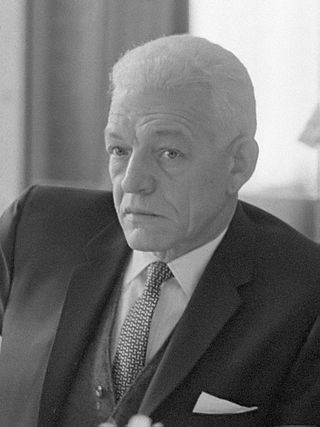
Juan Emilio Bosch y Gaviño was a Dominican politician, historian, writer, essayist, educator, and the first democratically elected president of the Dominican Republic for a brief time in 1963. Previously, he had been the leader of the Dominican opposition in exile to the dictatorial regime of Rafael Trujillo for over 25 years. To this day, he is remembered as an honest politician and regarded as one of the most prominent writers in Dominican literature. He founded both the Dominican Revolutionary Party (PRD) in 1939 and the Dominican Liberation Party (PLD) in 1973.
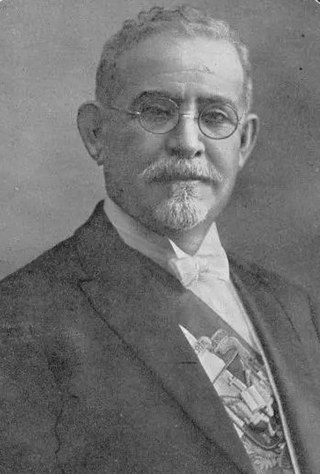
Felipe Horacio Vásquez Lajara was a Dominican Republic military general and political figure. He served as the president of the Provisional Government Junta of the Dominican Republic in 1899, and again between 1902 and 1903. Supporters of Vásquez were known as Horacistas, as opposed to Jimenistas, supporters of Vásquez's main rival, Juan Isidro Jimenes. He ran for a full term as president in 1914, but lost to Jimenes.
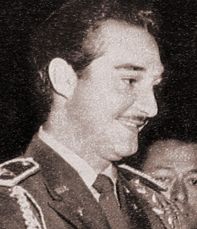
Rafael Leónidas Trujillo Martínez, better known as Ramfis Trujillo Martínez, was the son of Rafael Leónidas Trujillo, dictator of the Dominican Republic, after whose 1961 assassination he briefly held power. Nominally an army general, he lived the life of a reckless and spoiled playboy like his friend and sometime brother-in-law Porfirio Rubirosa. Remembered for his ruthlessness and cruelty, he went into exile in Spain, where he died of wounds ten days after crashing a sports car.

The Military Government of Santo Domingo was a provisional military government established during the American occupation of the Dominican Republic that lasted from May 13, 1916 to September 18, 1924. The United States aimed to force the Dominicans to repay their large debts to European creditors, whose governments threatened military intervention. On May 13, 1916, Rear Admiral William B. Caperton forced the Dominican Republic's Secretary of War Desiderio Arias, who had seized power from President Juan Isidro Jimenes Pereyra, to leave Santo Domingo by threatening the city with naval bombardment. The Marines landed three days later and established effective control of the country within two months. Three major roads were built, largely for military purposes, connecting for the first time the capital with Santiago in the Cibao, Azua in the west, and San Pedro de Macorís in the east; the system of forced labor used by the Americans in Haiti was absent in the Dominican Republic.

The Dominican Republic Professional Baseball League is a professional baseball winter league consisting of six teams spread across the Dominican Republic; it is the highest level of professional baseball played in the Dominican Republic. The league's players include many prospects that go on to play Major League Baseball in the United States while also signing many current MLB veterans. The champion of LIDOM advances to play in the yearly Caribbean Series.

Major General Antonio Cosme Imbert Barrera was a Dominican military officer and the 44th President of the Dominican Republic from May to August 1965.

Dominican Republic–United States relations are bilateral relations between the Dominican Republic and the United States of America. There are around 200,000 Americans expats in the Dominican Republic, and a little over 2 million Dominicans live in the United States.

The Air Force of the Dominican Republic, is one of the three branches of the Armed Forces of the Dominican Republic, together with the Army and the Navy.

The Dominican Civil War, also known as the April Revolution, took place between April 24, 1965, and September 3, 1965, in Santo Domingo, Dominican Republic. It started when civilian and military supporters of the overthrown democratically elected president Juan Bosch ousted the militarily installed president Donald Reid Cabral from office. The second coup prompted General Elías Wessin y Wessin to organize elements of the military loyal to the dictator Reid ("loyalists"), initiating an armed campaign against the "constitutionalist" rebels.
Elías Wessin y Wessin was a Dominican politician and air force general. Wessin led the military coup which ousted the government of Dominican President Juan Bosch in 1963, replacing it with a triumvirate. He was also a key figure in the ensuing Dominican Civil War, which led to a United States military intervention into and occupation of the Dominican Republic in 1965.
The following is a timeline of the history of the city of Santo Domingo in the Dominican Republic.

The nations of the Dominican Republic and Mexico established diplomatic relations in 1890. Both nations have over the years joined several multilateral forums and are members of the Association of Caribbean States, Community of Latin American and Caribbean States, Organization of American States, Organization of Ibero-American States and the United Nations.
Rafael Ángel Brache Ramírez was a politician, civil servant, and diplomat from the Dominican Republic. His career in national politics spanned from 1914 to 1935, after which he spent much of his life in exile.
The 1963 Dominican coup d'état was a coup d'état that took place on 25 September 1963 against President Juan Bosch in the Dominican Republic. Juan Bosch had been the first democratically elected president after the assassination of the former dictator Rafael Trujillo, but he faced criticism due to his policies, which were seen as leftist. This led to a coup that replaced his government with a military junta; which itself would be replaced with a civilian junta.
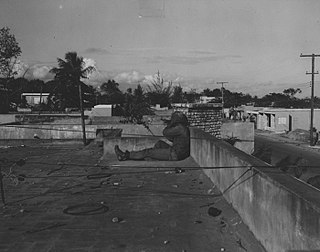
The Mission of the Representative of the Secretary-General in the Dominican Republic (DOMREP) was a peacekeeping operation established in 1965 by the UN to observe the ceasefire agreement between the two de facto authorities in the Dominican Republic during the Dominican Civil War. DOMREP was instructed to report any breaches of the agreements between the Constitutionalists led by Juan Bosch and Francisco Caamaño, and Loyalists commanded by Elías Wessin y Wessin and backed by the United States. Once the new Dominican constitutional government was formed, DOMREP withdrew.
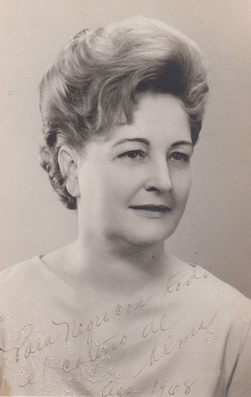
Alma McLaughlin, known in the Dominican Republic as Alma McLaughlin Simó de Trujillo and in the United States as Alma McLaughlin Trujillo, was a Dominican public figure and wife of former President Héctor Trujillo. She served as the First Lady of the Dominican Republic from 12 December 1959 to 4 August 1960.

















